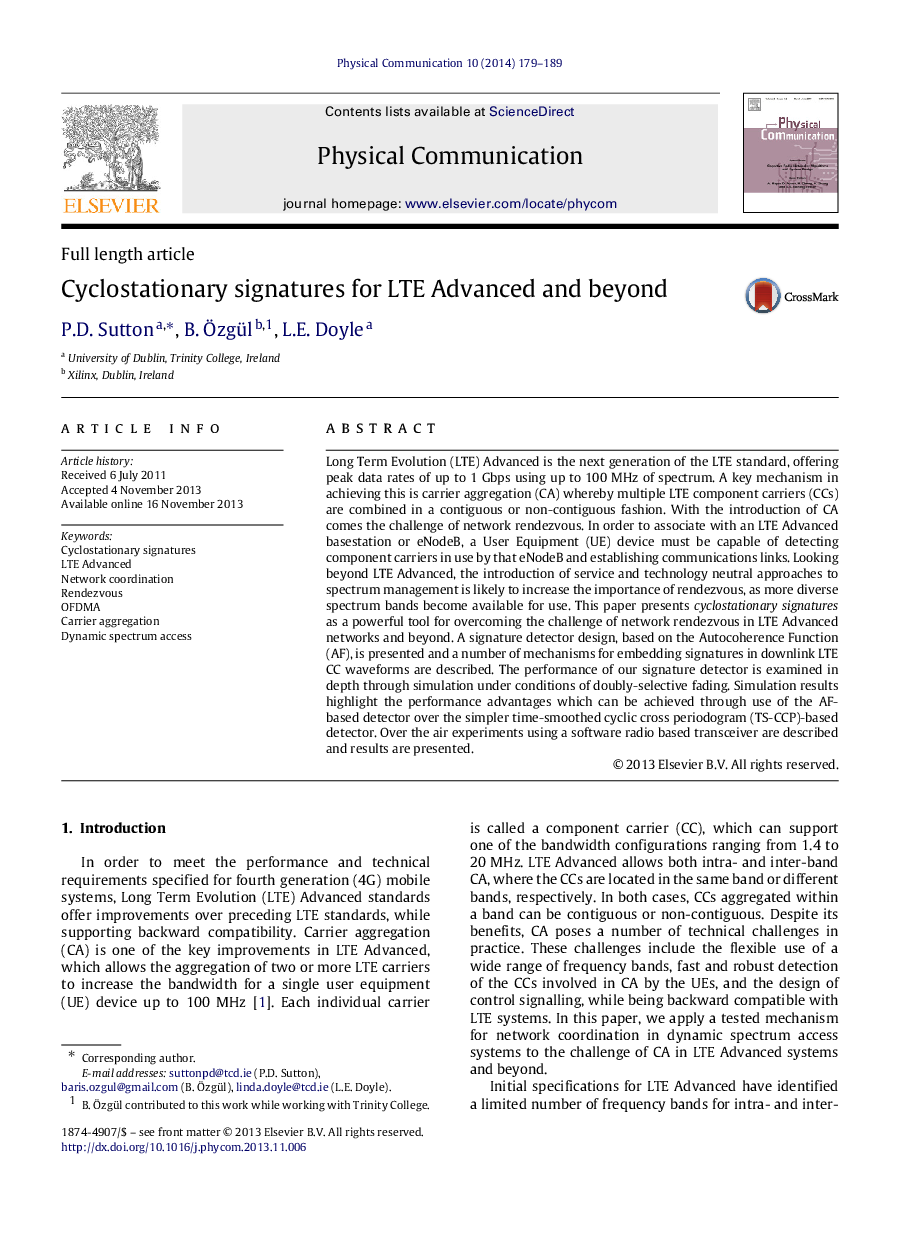| Article ID | Journal | Published Year | Pages | File Type |
|---|---|---|---|---|
| 466787 | Physical Communication | 2014 | 11 Pages |
Long Term Evolution (LTE) Advanced is the next generation of the LTE standard, offering peak data rates of up to 1 Gbps using up to 100 MHz of spectrum. A key mechanism in achieving this is carrier aggregation (CA) whereby multiple LTE component carriers (CCs) are combined in a contiguous or non-contiguous fashion. With the introduction of CA comes the challenge of network rendezvous. In order to associate with an LTE Advanced basestation or eNodeB, a User Equipment (UE) device must be capable of detecting component carriers in use by that eNodeB and establishing communications links. Looking beyond LTE Advanced, the introduction of service and technology neutral approaches to spectrum management is likely to increase the importance of rendezvous, as more diverse spectrum bands become available for use. This paper presents cyclostationary signatures as a powerful tool for overcoming the challenge of network rendezvous in LTE Advanced networks and beyond. A signature detector design, based on the Autocoherence Function (AF), is presented and a number of mechanisms for embedding signatures in downlink LTE CC waveforms are described. The performance of our signature detector is examined in depth through simulation under conditions of doubly-selective fading. Simulation results highlight the performance advantages which can be achieved through use of the AF-based detector over the simpler time-smoothed cyclic cross periodogram (TS-CCP)-based detector. Over the air experiments using a software radio based transceiver are described and results are presented.
